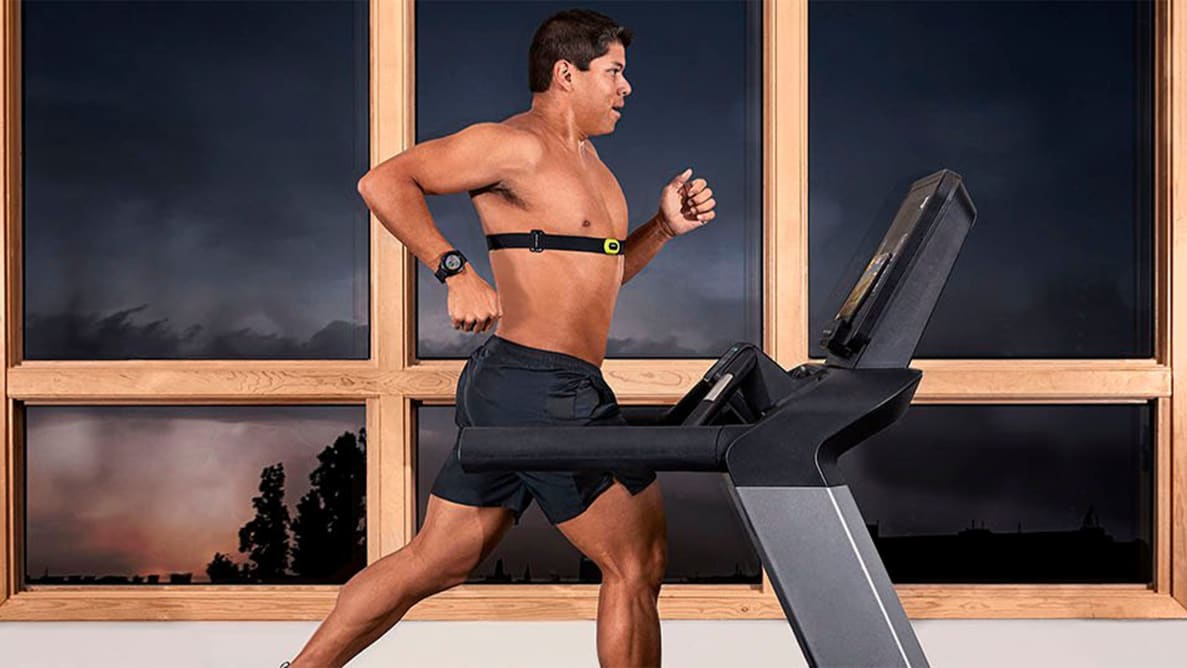Pros
-
Fits comfortably all day
-
Accurately tracks heart rate
Cons
-
Some statistics only available with another Garmin device
About the Garmin HRM-Pro
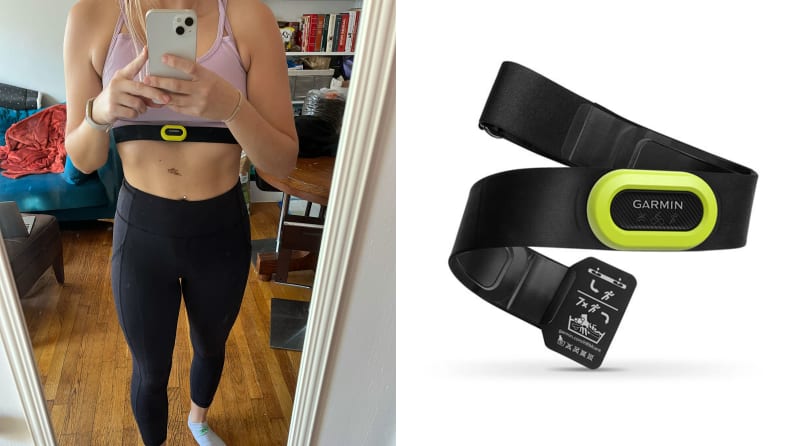
The Garmin HRM-Pro gives you a look at your pulse.
The Garmin HRM-Pro is a chest-worn heart rate monitor equipped with additional sensors that record your movement patterns. The monitor itself, which sits on the center of your chest, is about 2 inches long, 1 inch wide, and projects about a quarter inch. Unlike other monitors that snap on and off a band, this one is fused to a cloth elastic band. The whole thing is waterproof, so you can wear it in the rain and wash it without worrying about damaging the electronics inside (just don't put it through the washing machine). The band adjusts to fit chests between 23½ inches and 42 inches around, and you can purchase an extender that fits chests up to 56 inches.
The HRM-Pro tracks your heart rate, broadcasting it to a Garmin watch, any connected workout equipment that uses ANT+ or Bluetooth, various training apps, or your phone loaded with the Garmin Connect app. It includes accelerometers to measure steps taken while wearing it and uses the heart rate and movement info it collects to estimate your calories burned. It can also track running dynamics such as cadence (number of steps per minute), vertical oscillation (your “bounce” in your gait), ground contact time (how long each foot remains on the ground during your stride, measured in milliseconds), and stride length.
You can also wear it for heart rate tracking during other activities, like biking or swimming—it's fully waterproof and great for open swims. For a device made for laps in the pool, you'll want to check out Garmin's HRM-Swim, which has a strap designed to stay on your chest during flip turns (and resist those pool chemicals). If you're not much of a swimmer, you can also get the HRM-Dual, which like the Pro, can be used with connected workout equipment and fitness apps thanks to its dual transmission. Using the HRM-Pro monitor for one hour a day, the battery should last a full year before you’ll have to replace it.
What we like about the Garmin HRM-Pro
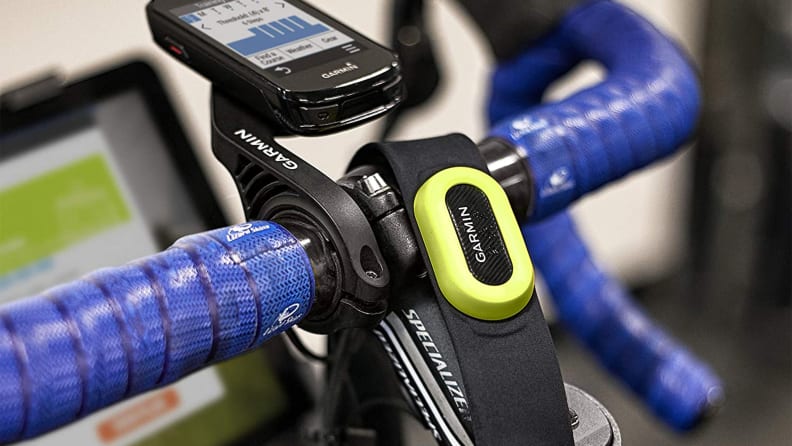
We love how accurate the HRM-Pro is.
It tracks heart rate accurately
For a more accurate look at your heart rate, you’ll want to look into a chest-strap monitor. Wrist-worn devices just aren’t as accurate, due to the distance of your wrist from your heart. To "prove" this, when testing the HRM-Pro, I wore the Fitbit Charge 5 to see how the heart rate monitors stacked up. Not only did the chest-worn HRM-Pro record changes in my pulse more quickly than the wrist-worn Fitbit, but it appeared to measure my heart rate more accurately, as the Fitbit overestimated my pulse at times: After one of my lighter-effort evening jogs, I checked my stats on the Garmin and Fitbit apps and found that while Garmin clocked my pulse around 165 beats per minute (bpm), a number I felt to be an accurate reflection of my effort; Fitbit recorded a pulse of 180 bpm, a maximum effort I know I didn’t reach that night.
Some fitness brands may also use different heart rate zones. Typically, heart rate is categorized into five zones, level one being a warm-up and level five being maximum effort. Garmin uses these five zones, which gives you a more nuanced picture of your effort compared to other brands (like Fitbit) that only use three or four.
It’s comfortable to wear for hours
Chances are, you’re probably not wearing a chest-strap heart rate monitor all day—many workouts can be done in under an hour. But if you’re wearing your monitor while preparing for or running a race, such as a marathon, you’ll easily be wearing it for a few hours at a stretch. In that case, comfort is of the utmost importance.
Now I’m not training for any races, so I can’t speak to what it was like to wear the HRM-Pro while running for hours on end, but I dedicated one day during testing to wearing it for as long as it was comfortable. After waking up, I strapped on the monitor and went for my morning walk. Garmin recommends placing the HRM-Pro “just below your sternum,” so I followed these instructions and wore mine below the bottom of my sports bra.
I wore it around the house, on my commute, and while working out at the office (a perk of being Reviewed’s health and fitness writer). The HRM-Pro is so comfortable I often forgot I had it on, and I didn’t feel the need to take it off until about 6 p.m. when it was time to shower and eat after work. All in all, I wore the monitor for roughly 10 hours with no complaints of chafing, bunching, or general discomfort.
However, this may depend on the individual. Reviewed managing editor Amy Roberts has used the HRM-Run when training for and competing in half marathons and other races, which fits similarly to the Pro. She typically wore hers under beneath the band of her sports bra (so it wouldn't slide down her ribcage) and experienced some chafing over longer efforts, but it was usually preventable by applying some Bodyglide on the skin under the monitor strap before her activity.
What we don’t like about the Garmin HRM-Pro
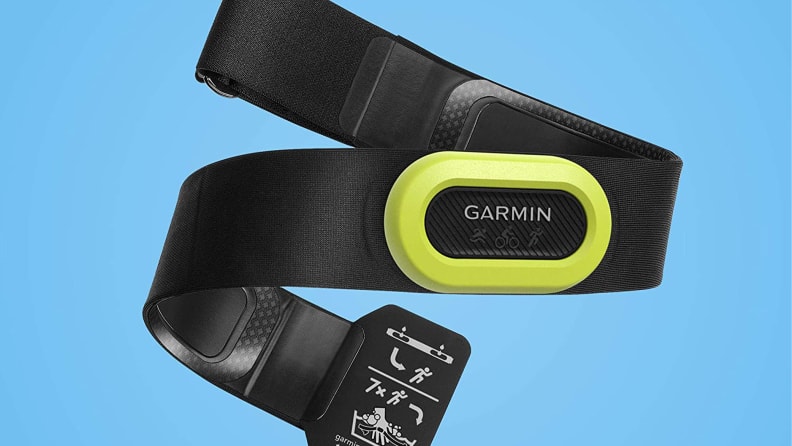
You may not be able to use all the HRM-Pro's special features.
You can’t use all the features without another Garmin device
The HRM-Pro is great for accurately tracking your heart rate, but to access the bonus running dynamics, you’ll need to connect it to a Garmin watch, such as our favorite running watch, the Forerunner 245 Music, or our best value pick, the Forerunner 55. From there, the data will integrate in the Garmin Connect app, so you can both analyze individual workouts and see how your running form changes over time. If you’re interested in the running dynamics but don’t want to purchase a second device or already use a fitness tracker or smartwatch from another brand, the HRM-Pro might not be the best option.
Warranty
The HRM-Pro has a one-year warranty wherein Garmin will repair or replace your device should it break.
Should you buy the Garmin HRM-Pro?
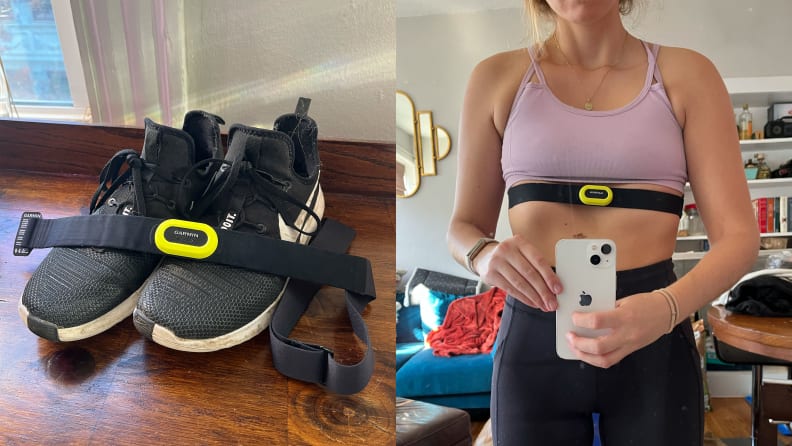
The HRM-Pro is a great option for those looking to track their heart rate.
Yes, if you’re already a Garmin devotee
The HRM-Pro is a great device for accurately tracking your heart rate during workouts, as it’s comfortable to wear while exercising, even for extended periods of time. But to get the most of it, you’ll need to pair it with a Garmin watch, from which you’ll be rewarded with a plethora of running dynamics data that could help improve your form.
Meet the tester

Esther Bell
Senior Staff Writer, Health and Fitness
Esther is a writer at Reviewed covering all things health and fitness.
Checking our work.
Our team is here to help you buy the best stuff and love what you own. Our writers, editors, and experts obsess over the products we cover to make sure you're confident and satisfied. Have a different opinion about something we recommend? Email us and we'll compare notes.
Shoot us an email